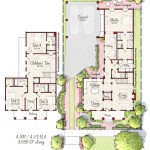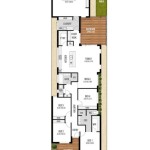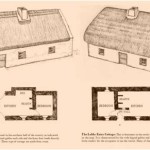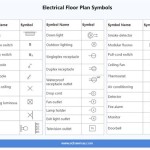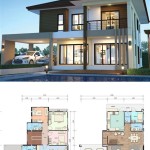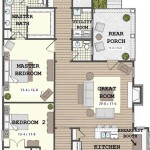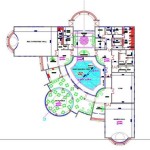Tree House Designs and Plans: A Guide to Creating Your Dream Treetop Retreat
A tree house evokes a sense of childhood wonder and adventure. It's a place to escape the ordinary and embrace the magic of nature. But beyond whimsical fantasies, tree houses can be functional and beautiful additions to any property. Whether for personal enjoyment, guest accommodation, or even a unique office space, the possibilities are endless. This article will provide an overview of tree house designs and plans, exploring key factors to consider, essential design elements, and resources for realizing your treetop dreams.
Choosing the Right Design
The first step in building a tree house is determining the desired design, influenced by factors such as intended use, budget, and the surrounding environment. Consider these key points when choosing a design:
- Purpose: Will the tree house be primarily for relaxation, entertainment, or a combination of uses? A simple platform with a roof might suffice for a quiet retreat, while a multi-level structure with windows and amenities could accommodate guests or serve as a functional workspace.
- Location and Landscape: The size and shape of the chosen tree, along with its location on the property, will dictate the design possibilities. Consider the surroundings, including views, privacy, and potential obstructions. A tree's size, health, and species are crucial, as different trees offer varying degrees of support.
- Budget: The cost of building a tree house can vary significantly based on materials, complexity, and labor. Determine a realistic budget and prioritize features accordingly. Simple designs with readily available materials are generally more affordable.
Essential Design Elements
Once a design concept is in place, consider these fundamental elements that contribute to a successful tree house:
- Foundation: This is the critical link between the tree house and its supporting tree(s). Careful planning is essential to ensure stability and minimize damage to the tree. Options include structural posts anchored to the ground, a platform built around the base of the tree, or a system of beams integrated into the tree's structure.
- Framing: The framing system dictates the overall shape and size of the tree house. Consider using lightweight materials such as wood, metal, or a combination of both. Adequate bracing for support and safety is paramount, particularly if the structure is multi-level.
- Exterior: The exterior finish should be both aesthetically pleasing and protective. Options include weather-resistant wood, metal siding, or even composite materials. Consider the surrounding environment and the style of the main house when selecting the exterior.
- Interior: The interior design should reflect the intended use. Choose suitable flooring, walls, and ceilings, ensuring adequate insulation and ventilation. Include lighting, electrical wiring, and potentially plumbing for amenities like a sink or kitchenette.
Resources and Considerations
Numerous resources are available to assist in the design and construction of a tree house. These can include:
- Professional Designers: For complex or custom designs, consider hiring an architect or structural engineer specializing in tree house construction to guarantee proper planning and safety.
- Pre-designed Plans: Many online resources and books offer pre-designed tree house plans, ranging from simple to elaborate. These plans provide detailed blueprints and instructions, simplifying the construction process.
- DIY Resources: Websites and forums dedicated to DIY projects offer valuable information, tips, and techniques for building tree houses. This can be a great source of inspiration and guidance for those who prefer a hands-on approach.
Beyond the design and construction, consider these additional aspects:
- Safety: Tree houses should be built with safety as a top priority. Ensure adequate handrails, stairs, and access points, and inspect the structure regularly. Consider installing smoke detectors and fire extinguishers for added protection.
- Environmental Impact: Minimizing damage to the tree is crucial. Use non-invasive techniques and select tree species that can withstand structural modifications. Plan for proper drainage to prevent water damage around the tree's roots.
- Permits and Regulations: Local building codes and regulations may apply to tree houses. Ensure proper permits are obtained before construction, and comply with safety standards.
Building a tree house is a rewarding journey, combining creativity, craftsmanship, and a love for nature. By considering the essential design elements and resources available, you can create a unique and beautiful treetop retreat to enjoy for years to come.

Pete Nelson S Treehouse Designs For Diy Ers

Treehouse Plan 8x15 Two Tree Treehousebrackets Com

San Pedro Treehouse Plans To Build In One Tree Or Free House Diy Designs

20 Simple Tree House Plans And Design To Take Up This Spring

Constration Help Tree House Plans Diy

Forest Wild Treehouses Treehouse Design Build Maintenance Services

Pete Nelson S Treehouse Designs For Diy Ers

12 Tree House Expert Tips For Your Dream Hideaway Arch2o Com

Technical Drawing Treehouse Plans Tree House Designs

20 Simple Tree House Plans And Design To Take Up This Spring

